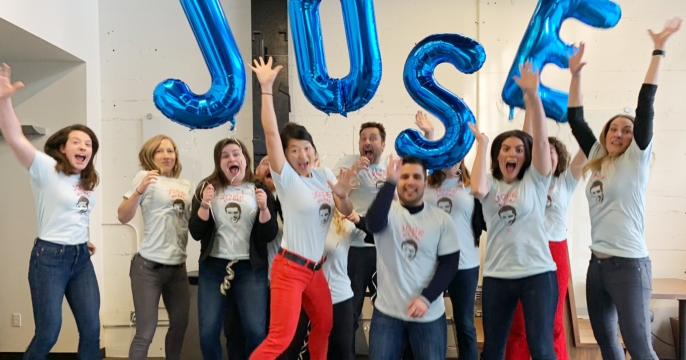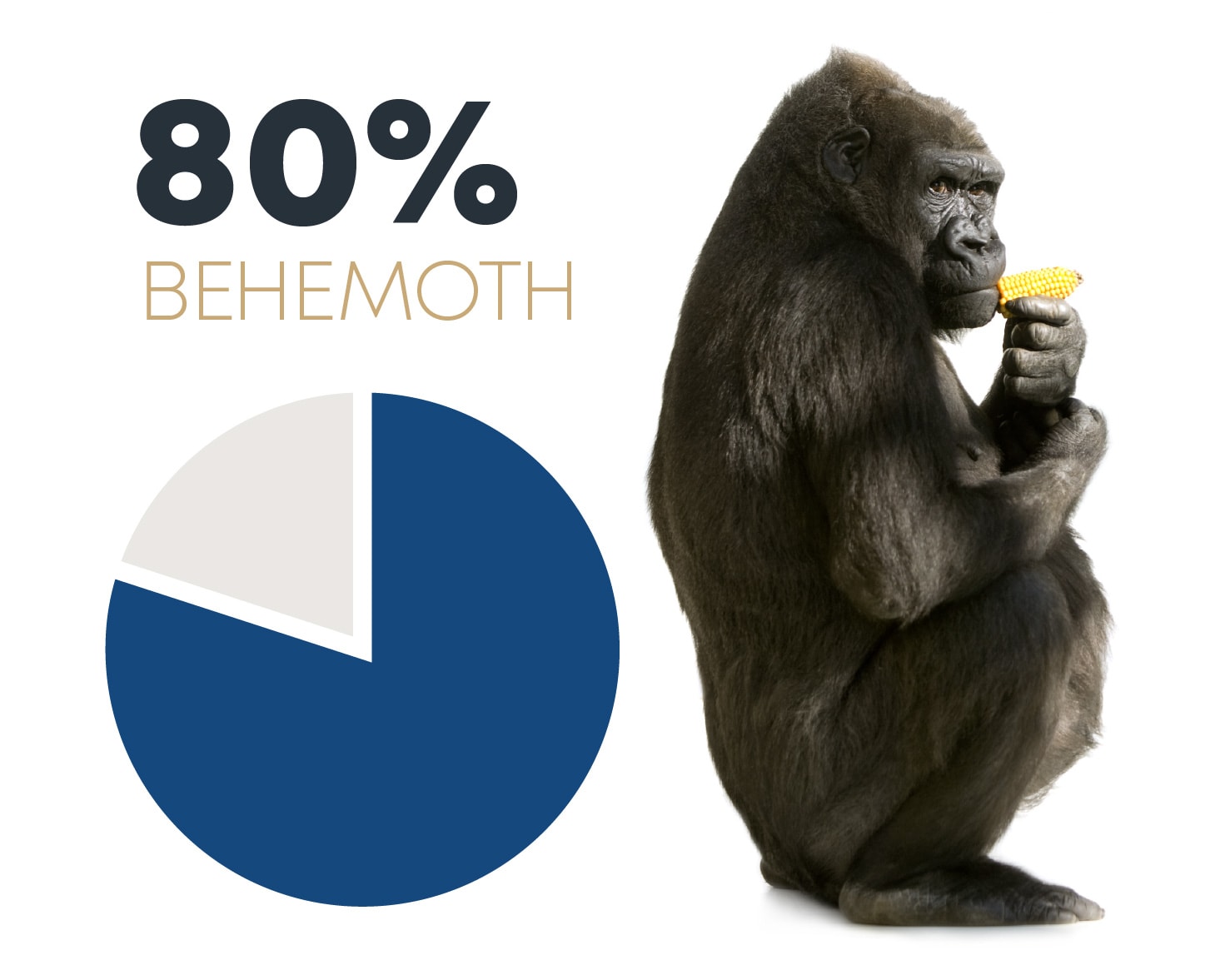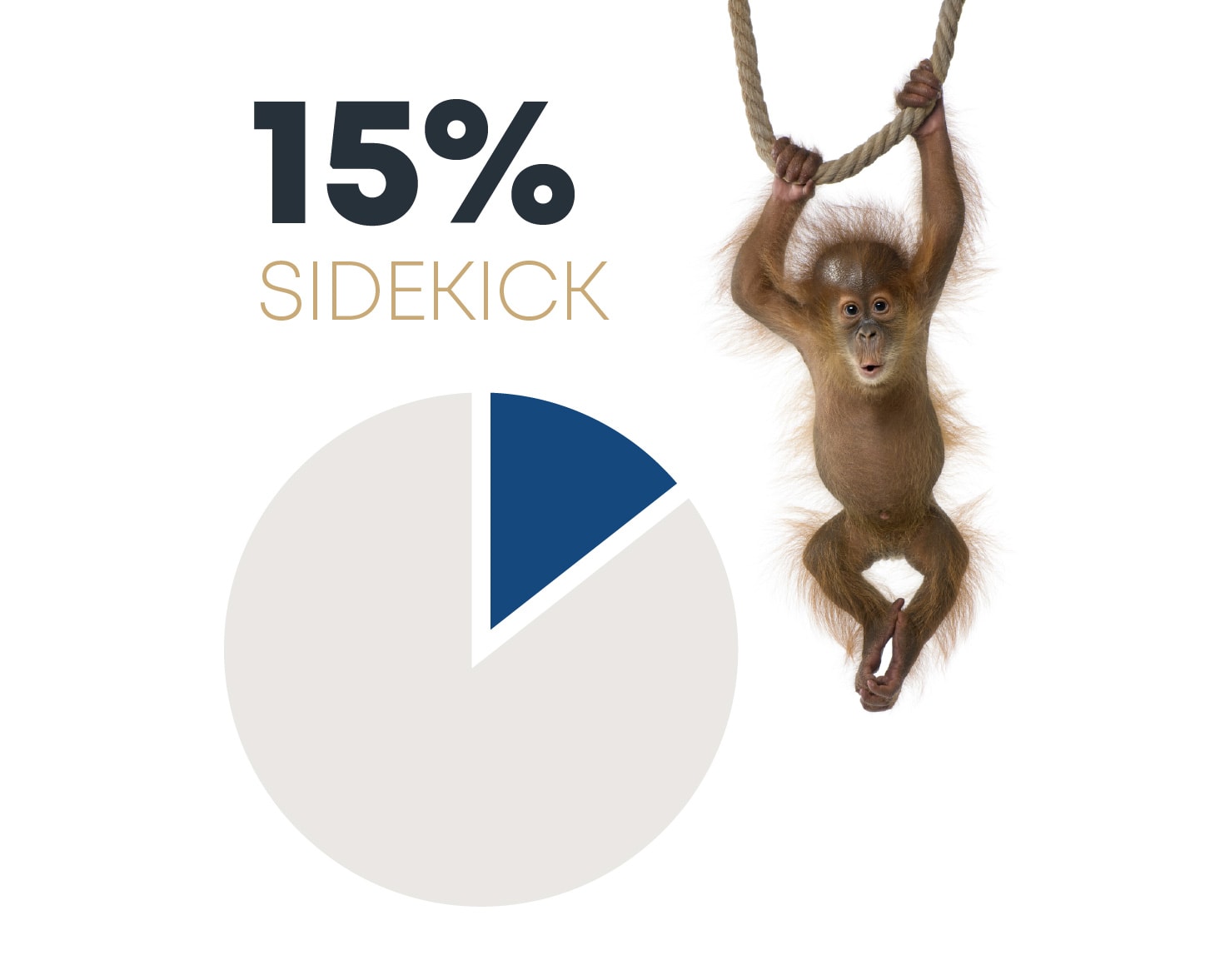
Why Employee Satisfaction Isn’t Enough
For years, the name of the game for managing people was employee satisfaction. With a changing labor market and higher employer standards, that focus is changing.

*Note: This is part of a series on the Kinesis blog about the wicked problems facing small businesses. Check out some other examples of wicked problems: Your Company Being a Best-Kept Secret and Market Commoditization.
John Smith should’ve been on top of the world – he was the owner of a highly profitable manufacturing company. Business was booming, growth was consistent, and he was sitting on a thriving, cash-producing machine. So why did he wake up once a week in a cold sweat, dreading the inevitable?
Because he knew, as many business owners do, that locked up in his office was an 800-pound gorilla, poised to wreak havoc on everything he’d built.
The 800-pound gorilla metaphor was born of a decades-old riddle:
Q: Where does an 800-pound gorilla sit?
A: Anywhere it wants to.

That’s because an 800-pound gorilla is so powerful that it can act without regard to anyone else. In John’s case, the gargantuan primate plaguing his dreams came in the form of a client commanding a majority of the business’s energy and resources.
But big clients are good, you might think. Big clients are what I spend all day tracking down. Closing a big client is a thing to be celebrated.
True enough, signing a major deal with a massive new customer is cause for excitement. In fact, John’s gorilla – we’ll call it Fluffy – took John’s company from a small, scrappy operation to a sizeable business almost overnight. John’s team expanded exponentially, they moved to a larger office, and John was even able to pay off his house as a result.
The problem? Fluffy comprised more than 50% of company revenue.
If you’re still failing to see the problem here, you’re not alone. Many business owners would probably be thrilled (initially, at least) at the prospect of such a large revenue opportunity. In fact, at Kinesis we’ve met businesses whose largest client comprised up to 80% of revenue – a far cry from the best practice of 15% or less.

But on some level, it makes sense. More than just its financial appeal, having only one major client makes business very easy to transact: the relationship exists so you don’t have to do much new selling. You only have one person to invoice, and one person from whom to collect. So in the beginning, it seems almost too good to be true. The relationship feels symbiotic and healthy.
That is, until Fluffy sits down wherever it wants.
The problem with having one or two clients commanding 15% or more of your revenue is that – thanks to the “customer is always right” principle – Fluffy rules your business. This client knows they have you in a chokehold and operates accordingly. You will probably have very little say over pricing or project timelines. Fluffy can dictate how quickly or frequently he pays you. When times get hard for Fluffy, he passes that pain onto you – by pulling projects, paying more slowly, becoming more demanding, you name it.
Suddenly the gorilla you were initially so thrilled to capture is tearing your business apart limb from limb.
The obvious solution here is to find ways to make this relationship more sustainable – but for most businesses, this is vastly easier said than done.
For starters, you’ve built your business around Fluffy. You staffed up the organization based on Fluffy’s projections. You purchased new equipment anticipating Fluffy’s projects. You’ve allocated capital as an investment in the company, based on the assumption that Fluffy would remain soft and cuddly for years to come.
To make matters worse, you also haven’t put forth any energy toward sales, business development, or marketing – because why would you? Money was flowing. But that also means that you’ve become out of touch with the marketplace and have no relationships to build upon to replace Fluffy with something more sustainable.
Moreover, Fluffy has implications for the effectiveness of your sales team (if you have one). Often we find that in organizations with an 800-pound gorilla, the sales team operates much more like customer service – acting as account managers for Fluffy and taking orders rather than proactively seeking new business.
Perhaps most concerningly, your business operates on a misleading financial model which has historically artificially inflated its profitability and health. Since your P&L doesn’t account for investments like sales and marketing, you have nowhere to pull money from to solve the problem.
In short, you’ve been so preoccupied with serving your 800-pound gorilla that you’ve been blinded to the hidden dangers of doing so.
Lest we sound like alarmists, the Fluffy problem does have a solution – but it requires time, dedication, commitment, and patience. As the old Chinese proverb goes: “The best time to plant a tree was 20 years ago. The second-best time is now.” Here are some questions you can ask yourself (and by extension, measures you can take) immediately to begin preparing your company for this shift, and there is only upside to starting today:
This won’t happen overnight, but step # 1 will be to better understand your current client mix – what it looks like today, and how you’d like to see it change. This means evaluating not just 800-pound customers, but also type of work, services, industries, and locations.

How much of your revenue is tied up in the public vs. private sector? How many of your clients are in a single industry (which, if it collapsed, would take you along with it)? Painting a clear picture of the current state of affairs will help you target the areas with most opportunity.
(Pssst: Looking for a jump start? Check out our Client Stratification Exercise.)
If business has been booming, you’ve probably been riding on the coattails of outdated marketing strategies or an old website for far too long. It’s time to dust off your old marketing plan and put forth a new strategy that will get your company back off the ground. Depending on your resources, this could mean starting with a modest effort, or overhauling your marketing program entirely.
(Pssst: Not sure where to begin? Take a look at our guide for how to maximize your marketing budget – whatever it is.)
With the right marketing infrastructure in place, it probably makes sense to bring on someone (or someones) to support your business development efforts. This can be an internal promotion, if you already have a great fit for the role on your team, or an outside hire. Be sure to vet thoroughly and budget accordingly.
(Pssst: Curious how to help your sales team play to their strengths? Read our post on the important differences between sales and marketing.)
Client concentration isn’t the only threat looming on the horizon for your business. Many others – like regulatory pressure, generational shifts in the workforce, or changes in customer buying behavior, to name a few – could have just as profound an impact on the sustainability and scalability of your company. The most successful business owners we know are constantly on the lookout for these types of trends and actively pivot their organizations to shoulder the impact. Consider what other forces are at play in your space, and how you can better prepare for them.
(Pssst: For an example of how one business owner anticipated and overcame these types of obstacles, hear from Grovemade Founder Ken Tomita.)
While parting ways with an 800-pound gorilla will never be easy, it is far from impossible. Kinesis has worked with a number of clients for whom one customer comprised 50, 70, or even 90% of revenue and found their way out.
With the right preparation and resources, you too can turn Fluffy from a King-Kong-style nightmare to a friendly organ grinder sidekick.

Get insights like this straight to your inbox.